Timon Koulmasis - Light images of a youth that existed before all these events...
An interview of Timon Koulmasis to Dimitra Karya about his documentary “Ulrike Marie Meinhof”
The thought for this interview did not occur just because Timon Koulmasis “happened”, favoured (?) perhaps by the circumstances of his life , to incorporate amateur films in his documentary “Ulrike Marie Meinhof”. And indeed amateur films which mean private moments, of a person who marked with his choices an era of post-war Germany and political consciences, under conditions of acceptance or condemnation, all over the world. The interview had to be done because the amateur material is utilized in the best possible way and also the documentary as a whole is very important. Two different parameters? Probably not…Watching and re-watching the film , I realize that , apart from its originality and apart from the artistic and personal bravery the choice of this kind of topic demanded, it is important because it allows us to slide from its apparent aim. By interweaving the private and the public , the surfacing of an innocent “super 8” past a posteriori and under the eye of the irrevocable , gives us the chance for further readings, which lead the questions concerning the action and the motives from the “then” of history to the “always” of the existence. I confess that every time , after the end of the screening , I find it impossible to say for sure “why Meinhof decided she could change the world only by means of weapons”. There are only images left. A modern chorus of an ancient tragedy from former (or forever ) friends and opponents and a close- up from an 8mm film: Ulrike is trying to touch a kite. To drag it down to the ground or, maybe , to fly caught onto its tail. It seems to me that this is the most substantial as well as the most painful answer that Timon Koulmasis could suggest not only about politics but also about every expression of human dismay.
Nikos Mitroyiannopoulos
---
D.K.: Mr. Koulmasis let’s start with the background of your documentary. A comment?
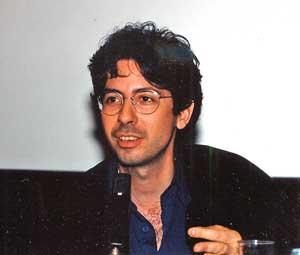 T.K.: At first I was going to make a fiction film with Ulrike Meinhof’s daughter , Bettina, but she found it very harsh and she finally left. The topic was the history of Germany seen through the eyes of two children starting from 1965-67 and finishing in around 1980.The parallel stories of two children whose mothers are politically involved, but in a totally different way: Ulrike Meinhof and my mother , who fought against the Greek Junta through the Deutsche Welle. I meant to present the face of Germany of that era through these lives. The script got many distinctions but never got funding for obvious political reasons. And then a friend , the producer Fabrice Pussot suggested that I make a documentary, which scared me at first, as I was too close to the protagonists of the story. But at some point I decided I carried a great responsibility and I had to do it, because thanks to this privilege I would have access to places that other directors wouldn’t have. When I finished the documentary I had no desire whatsoever to make a fiction film, I had said everything. Who knows, in some years…
T.K.: At first I was going to make a fiction film with Ulrike Meinhof’s daughter , Bettina, but she found it very harsh and she finally left. The topic was the history of Germany seen through the eyes of two children starting from 1965-67 and finishing in around 1980.The parallel stories of two children whose mothers are politically involved, but in a totally different way: Ulrike Meinhof and my mother , who fought against the Greek Junta through the Deutsche Welle. I meant to present the face of Germany of that era through these lives. The script got many distinctions but never got funding for obvious political reasons. And then a friend , the producer Fabrice Pussot suggested that I make a documentary, which scared me at first, as I was too close to the protagonists of the story. But at some point I decided I carried a great responsibility and I had to do it, because thanks to this privilege I would have access to places that other directors wouldn’t have. When I finished the documentary I had no desire whatsoever to make a fiction film, I had said everything. Who knows, in some years…
D.K. : You used close-ups from amateur shooting in a resourceful way. What was the reason that dictated this use?
T.K. : The film focuses on the effort to understand why someone we know, Ulrike Meinhof, decided one fine day to take a gun , having realized that it was impossible to change the world by means of “word”. Eternity put “masks” on her face. Left Wing gave her the mask of the victim (victim of the state, victim of her husband) turning her into a hero at first and then into a legend. Right Wing, on the other hand, gave her the mask of a common criminal who waged war against society. So in order to comprehend the primary question of why Meinhof took the guns, we had to take down these two masks. And to achieve this we had to discover the human being , to see , keeping always in mind the political dimension but not at all the psychoanalytical aspect, her evolution, the years of building her character, the influence of the woman who brought her up, her marriage. The super 8 films do not simply remind us of the reality and do not add simply emotion to the documentary. In my opinion, they give a human dimension to a person who was up to then only a public image. While now we can compare , we can observe the circumstances where she is not a public person, we can add this missing dimension to fully comprehend her personality.
D.K. : Could you remind us who they came from? Klaus Rel is mentioned in the generiques. Was he only one? Were there other people who gave you material?
T.K. : All the material comes exclusively from Klaus Rel and consequently in a way from my family. The shots showing me and the children in general are films perhaps from our holiday and consequently my family’s films in a broad sense. Legally the owner is Klaus Rel, Ulrike Meinhof’s husband and father to the two girls, the young woman to whom I dedicate this documentary.
D.K. : What is the duration of the purely amateur material in the film? What was the format of the films you tracked down?
T.K. : The format of the specific material is standard 8 and super 8. The black and white takes where Ulrike Meinhof and Klaus Rel are dancing on the beach must be standard and the rest ( in colour) super 8 in my opinion. In the total duration of the 61 minutes of the documentary , these images take up five or six minutes. The total duration of the material I was given is one to two hours.D.K. : Did Klaus Rel set any conditions or limits to the use of this material?
T.K. : The conditions Klaus Rel set for the use of these amateur films were very simple and clear: he granted a lot of material on condition that it would under no circumstances be used independently of my documentary. No part of my documentary with super 8 takes can be screened anywhere , and that goes for sales, distribution networks etc. I have every right to distribute and screen my documentary but always respecting this condition. So I insist that these pictures cannot be shown out of the bounds of this documentary. Besides, as far as I know, I am the only one that Klaus Rel granted this material, a fact interpreted by the relationships we had.
D.K.: After the completion of the documentary , were there any kind of side effects, reactions, concerning the use of these private films?
T.K.: Any problems I faced afterwards , regard mainly the documentary as a whole and not the use of the private films. There were some things that Ulrike Meinhof’s daughters could not endure.
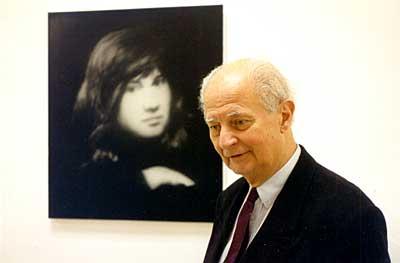 D.K.: In your environment was there a tendency to make “family movies” ? If so, could you mention the machinery used and the whole procedure of film making? Was it something usual? Was it spontaneous? Pre-planned? Do you remember reactions or subjects?
D.K.: In your environment was there a tendency to make “family movies” ? If so, could you mention the machinery used and the whole procedure of film making? Was it something usual? Was it spontaneous? Pre-planned? Do you remember reactions or subjects?
T.K. : In our family, in both families , Klaus Rel was the one who filmed. They were usually spontaneous takes , of no particular subject, to capture family moments and mainly holidays, which we showed very rarely after that. At the age of eight-nine my father gave me as a present a super 8 camera. So I started shooting in the 1960’s. I imagine I felt this desire as I was watching Klaus shooting films. Of course, there are not many things left from that period, I don’t even know where they are and they carry no special value , they’re just pictures from holidays seen through a child’s eyes.
D.K. : Apart from the extracts you used, were there more takes with Meinhof? If so, what was the duration approximately, and why didn’t you use them?
T.K.: Why didn’t I use more? These pictures had to find their place in the documentary. And we have to be very careful when using these shots as they carry considerable emotional charge. Then, one must find the right duration, to incorporate them in the film at a right pace.
D.K. : Was there any other rationale that determined the use of these extracts?
T.K. : An important reason was the right distance I had to keep as a director towards the facts and the subject. The fact that I was so close to the people did not allow me to have a neutral look, as anybody else would have. My position definitely enabled access, people talked to me much more easily, they granted material to me. However, if I had used more amateur material, I would have abused my position regarding a case which is indifferent as to whether I was close or not, I would have jeopardized the balance of the film between the private and the public. Another reason is that I don’t want to blackmail emotionally the viewer. We must not show them more private moments in a story that became a public and political case. And of course there were some pictures that I decided not to use because , firstly, they did not contribute to the composition of Ulrike Meinhof’s personality and the comprehension of the political issue and secondly to protect some people like her daughters, my little sister, my mother.
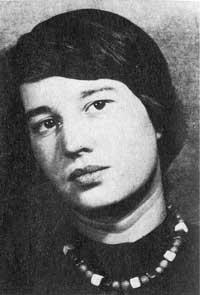 D.K. : Did you telecine the material? Was blow-up required? Were there any problems (flickering *1)? Could you mention some technical details?
D.K. : Did you telecine the material? Was blow-up required? Were there any problems (flickering *1)? Could you mention some technical details?
T.K. : We did telecine the material because we filmed it on 16mm and we did not have blow-up to sandwich, that is directly blow-up from super 8 to 16mm. Simply as I told you, we screened the pictures super 8 and we shot them in 16mm. We didn’t have any particular problems. The flickering issue doesn’t exist for me , as even if it is there at some points , it is part of the feeling the super 8 gives. It comes from the different speed that 16mm and super 8 cameras may have. The super 8s , even if they shoot at 24 frames, you can never be sure they are 24, it is difficult to achieve this timing, so we try to shoot at a lower pace some takes that were in 18 frames at that time etc. It is that kind of intervention.A problem we come across in super 8 films is that they don’t have amorses, which have been worn out, so we are careful that the film won’t break while screening. We realize one more time that amateur films are badly kept many times. As for lighting, we filmed the screen in a room as dark as possible. Another technicality is that we must wait until the optirator ( *1) of the camera is synchronized to the speed of the projector so that there are no lines. All these details are not real problems but some measures must be taken as a precaution.
D.K. : Did you change the speed of the original material, the sound band or the colours? Were there interventions? For example, at some point we see black and white close-ups from the offices of Konkret, Ulrike and Klaus and at the same time office sounds are heard off. Did these sounds exist or did you add them?
T.K. : The films were silent so there was no intervention. We simply added music and sounds to some close-ups. Nor was there an intervention at colour level. In the end , we did etalonage to the documentary, but we respected the colours of the super 8 which remained as they were. The black and white close-ups in the Konkret offices were not super 8, we dug them up in a I-don’t-know-what German channel, from archives on 16mm. As they were also silent, we added some sounds from typewriters, telephones to re-create the atmosphere of an office of that time.
D.K. : What was the condition of the material you used in the film? Did it require some special treatment? Some kind of maintenance or restoration?
T.K. : The material was in quite good condition . No one did anything to maintain or restore it. Nor did I intervene in any way. I just filmed all the material I had on 16mm and so I saved it, transferring it to a more professional format. I filmed it exactly in the condition I found it : not cleaned or improved in one way or another. It goes without saying that while editing the film I selected the close-ups I wanted to use and I didn’t use all the material in its full length.
D.K. : Only on one occasion did you use the sound of the projector.
T.K. : It was quite a funny holiday scene where Klaus is dancing and Ulrike is running fast, where we added a rock’n’roll piece of that time. At that point exactly we used the sound of the projector to emphasize the family aspect of the film. It is the sound that brings to memory these moments, when we showed the films at home and, even if we added some music, the sound of the projector was always present. So the idea is to re-live this atmosphere and state clearly that these pictures were shot just like that and we should be taken as such: documents and testimony of an era, the everyday routine, the holidays with very little direction. To convey that feeling, we added the sound of the projector.
D.K. : I noticed that after mentioning the villa that was bought by Meinhof and Rel there are close-ups of a boy from an amateur film. The boy is obviously you, after all you add photos to the narration, however the picture of this short amateur film is worn out, so with great difficulty can one recognize the face.
T.K.: Indeed the boy is me. The reason why I am present in the super 8 films at this point of the documentary is this : we are in the garden where we used to play in our childhood, where our parents used to meet and experience the free relationship between the two couples , which the children perceived but without fully understanding. The whole cinema mechanism is there to re-produce this atmosphere. The sound of the sparrows flying away just like our childhood flies away, the music lightmotif, the bass notes of a prelude of Rachmaninof, all being elements that bring my childhood back to mind. So at some point I had to incarnate this idea. I also had to show that I was the one shooting the documentary, I was there. Besides at this very point of the documentary we see my father, we also see Klaus talking about my mother, so it would be dishonest not to show myself. It is a poetic recollection of childhood, blending many things together: the divorce, a tragic event for Ulrike, my personal story and my parents’ story. I don’t have many shots of myself in the garden.
D.K. :Why did you choose such a short image of childhood?
T.K.: We chose this particular thing , it was short but I didn’t want to use slow motion. It’s a flash, a recollection and recollections don’t last, they are not like the memory which gets hooked. Like photographs. Besides I found the passing of the cinema picture towards photography, which can also be personal, interesting.
D.K.:You choose to end the documentary with shots from an amateur film. Ulrike is looking through a telescope, she turns to the lens and smiles. Immediately after that she is trying to catch the tail of a kite. Why are you closing a politically and historically explosive documentary with the private space or private moments of Meinhof?
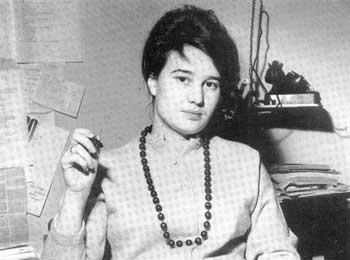 T.K.: We want to take off the masks, to underline the human being. After a rather cruel quarter , narrating RAF’s activities and mainly the years of imprisonment and the death , Ulrike Meinhof’s suicide, the shots in the end are a reminder that that woman is a simple human being and her destiny remains human even in a society like ours. And that fact does not take away anything from her political choices. The last interviews answer the question : “What ‘s left ?” The people who met her and were close to her do not accept the thought that the only thing left is the masks imposed to her. The documentary shows that first of all she was a human being who went through all this transformation on her course towards the public face. Light images of a youth that existed before all these events…
T.K.: We want to take off the masks, to underline the human being. After a rather cruel quarter , narrating RAF’s activities and mainly the years of imprisonment and the death , Ulrike Meinhof’s suicide, the shots in the end are a reminder that that woman is a simple human being and her destiny remains human even in a society like ours. And that fact does not take away anything from her political choices. The last interviews answer the question : “What ‘s left ?” The people who met her and were close to her do not accept the thought that the only thing left is the masks imposed to her. The documentary shows that first of all she was a human being who went through all this transformation on her course towards the public face. Light images of a youth that existed before all these events…
D.K.: Since you mentioned the gravity and cruelty of the documentary, could you explain the reason why you chose to show Ulrike Meinhof’s photo after her suicide, which was rather cruel?
T.K.: It is a picture that I myself am unable to see and I close my eyes in every showing. I hate anything that aims to create sensation by means of violence and false emotions. I don’t believe it is a picture that completely lacks shame like the ones we see in superproductions in order to impress the viewer. It is certain that this picture reveals another aspect of Ulrike that does not look like anything we know so far. It ia a face that gradually becomes crueler and drier exactly like her speech. We must have the courage to face this picture, distinctly violent, which ends a story also violent and tragic. On the other hand, it is a photograph that was on STERN magazine for a week, in hundred thousands copies. It belongs to the collective memory of Germany. The question is not if we must show it but if we have the right not to show it.D.K. :I suppose that today this material has been returned to Klaus Rel. Do you know if he has made any efforts to save it?
T.K.: At that time we had transferred all the films in VHS tapes so that they would be more handy. The already existing 16mm negative is more stable than the super 8. But it is obvious that at some point we would have to transfer it to DVD.
D.K.: These films concern a person which is an important part of contemporary history at least in Germany, and of course a person who clashed with and was persecuted by the authorities. What happened to them? Did the police ever seek them? Did any official film archive ask for them in order to preserve them? Are they accessible to researchers or are they still a closed private collection?
T.K.: I don’t know if the police were aware of the existence of the films but I don’t think they would be interested one way or another. Of course our telephone as well as our house were under surveillance , but no one ever asked for the films, neither any other archive nor another institution, at least as far as I know. Anyone interested in the subject come mainly to us about the film. For example, there are several biographers of Ulrike as well as directors who asked me to have the documentary. Also, the last interview with Astrid Proll, ex-member of RAF, brought on interest on behalf of certain researchers, French and German, as well as Gudrun Enslin’s son and sister , who has some kind of archive collecting anything that has to do with the case. Therefore, some people are interested in anything that has to do with RAF. Proll’s interview is at the disposal of researchers, but not its full length, only the part we edited in the documentary. This decision was made so as to avoid problems due to possible bad use of the material , which beyond the bounds of the film may distort the content.
D.K.: Was this documentary the beginning of other creations round this subject?
T.K. : Twenty years after Ulrike Meinhof”s death this was the first film and caused a lot of debate in the Festival of Berlin. After that more films were made , books were published , performances were created, choreography. A taboo had been broken, a small taboo in Germany compared to the big taboo which is the Second World War This does not necessarily mean that these creations resulted from the documentary but mostly that my film is integrated in a movement of realizing this specific subject, where our generation set a question to the ’68 generation about what had happened, exactly like the ’68 generation had set a question to the previous generation about World War II.
D. K.: Have you used amateur films in other projects of yours? Have you “imitated” their aesthetics?
T. K.: We have used super 8 film, but not personally, in other films, as we have also shot super 8 films, mainly black and white, in fiction films to capture the atmosphere and feeling of childhood. But never for exclusively aesthetic reasons, as usually happens in Advertisement. For example, in the documentary “ Sinassos – a topography of memory”*3 we shot some super 8 close-ups of old-lady Maria, which we added at the end of the film, in her small yard in New Sinassos, to transfer her in this way to her childhood in Sinassos of Turkey. It’s an impression we wanted to create, an image that would move viewers in relation to its story. Another example is the fiction film I am shooting at the moment with the temporary title “ Before the night”. We shot several black-and-white super 8 frames on a small island in Greece and in Berlin, which must remind a very specific period of one of the heroins’ childhood.
D. K.: Do you find that amateur films are important as part of archives? As archival material? Why?
T. K. : It is obvious , because collective memory functions in many levels: in historical events, in works of art, in literature, in cinema etc. and at a great extent in the testimony of everyday life and this is amateur films which we should save and use in a clever way. The problem is that amateur films are difficult to come by. And it is also difficult to find pictures of everyday life in the films found in archives. The museum Albert Kahn, established by a French-Jew banker, used all his fortune in the 1910’s, 20’s, 30’s, sending camera operators shooting everywhere ,thus creating a museum of the World. There we can often find images like this. For these reasons , I consider that every effort, like the one by the “Of the Anonymous” society, for the preservation of amateur films is invaluable.
D. K. : Mr. Koulmasis, thank you for your patience and for accepting the fact that this interview would not concern the film you are currently making or your more recent projects but be restricted in the 1994 documentary and specifically the part regarding the use of amateur material. I believe something like that would not be a matter of course to many.
* Timon Koulmasis was interviewed by Dimitra Karya in Paris for the “Of the Anonymous” Society, with the co-operation of Nikos Mitroyiannopoulos.
TIMON KOULMASSIS’ CURRICULUM VITAE
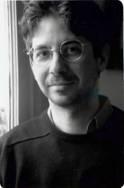 Timon Koulmassis was born in Germany in 1961.After studying History and Philosophy in Germany and France he started working as a director and a scriptwriter in Paris in 1983. Between 1987 and 1989 he shoots “ Wasteland” (35mm, black and white, 90’), which was shown in Cannes Festival (1988) and was awarded the First Prize in the Festival of New Directors of Belfort (1987). In 1991 he directs “ Sappho’s dream” (16mm, black and white, 64’) and in 1994 the documentary “Ulrike Marie Meinhof” (16mm, colour , 61’). The film participated in many international festivals and got the Europa (1994), the Silver Fipa (1995) awards and the award of best discovery documentary in the International Festival of New Cinema in Montreal (1995).
Timon Koulmassis was born in Germany in 1961.After studying History and Philosophy in Germany and France he started working as a director and a scriptwriter in Paris in 1983. Between 1987 and 1989 he shoots “ Wasteland” (35mm, black and white, 90’), which was shown in Cannes Festival (1988) and was awarded the First Prize in the Festival of New Directors of Belfort (1987). In 1991 he directs “ Sappho’s dream” (16mm, black and white, 64’) and in 1994 the documentary “Ulrike Marie Meinhof” (16mm, colour , 61’). The film participated in many international festivals and got the Europa (1994), the Silver Fipa (1995) awards and the award of best discovery documentary in the International Festival of New Cinema in Montreal (1995).
His next piece of work, directing together with Iro Siaflakis was the documentary “ Sinassos- a Topography of Memory” ( 1996-97, 16mm, colour, 60’). The documentary was honoured with the National Award of Greece (1998), the Audience Award in the Thessaloniki Festival (1998) , the Award of best documentary in the Mediterranean in Palermo (1997), the Peace and Friendship Abdhi Ipeckci Award (1999), the 1st Award in the Week of European Documentary in Strasbourg (2001). In 2000 he directed “ANIS N., terrorist or rebel?” (video, colour, 52’) and in 2003 the documentary “The Roads of Rebetiko” (16mm, colour, 66’) together with Iro Siaflakis. In 2004 he is going to complete his film “Before the Night” (35mm, black and white, 90’).
*1 The flickering sometimes happening during screening
*2 The metal disc between the “door” of the take and the lens. The shutter opens and closes allowing or obstructing the light to come through.
*3 A documentary produced in 1997 , co-directed with Iro Siaflakis.
